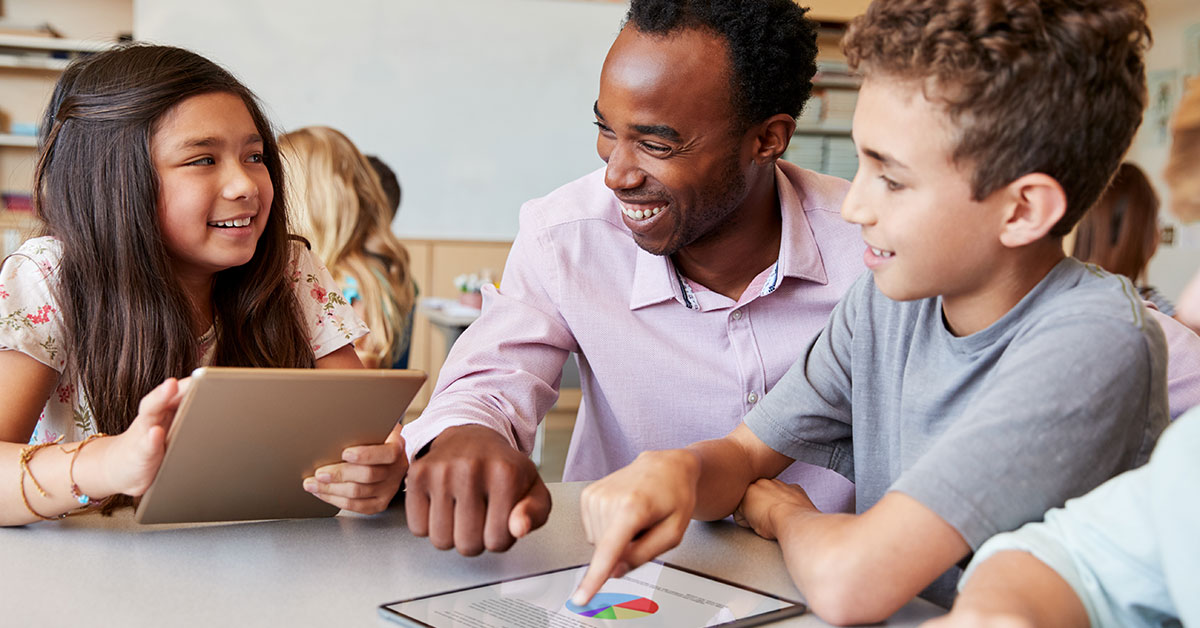Sometimes, important ideas in education swing out of favor — and then we remember how important they are. Other times, a new innovation introduces something completely new to the field. As teachers, it’s important to be aware of what’s trending so that we can capitalize on great ideas that are returning to prevalence, and to take advantage of new technological and pedagogical innovations.
At the Van Andel Institute for K-12 Education, we work with teachers and schools around the country to support the incredible work that they’re doing. In our work, we’ve noticed schools putting five big ideas to work to improve student learning and student lives. Here’s a quick look at what we’re seeing schools find success with these days.
SEL
Social-Emotional Learning (SEL) has always been important — but coming out of the pandemic, that importance has skyrocketed. Student mental health issues are prevalent and often acute, and teachers often find themselves on the front lines, dealing with the repercussions of these issues.
CASEL has some incredible resources to help support teachers in promoting SEL. And we’ve put together a collection of strategies as well — check out our SEL Strategy Explorations for tons of free ideas that will help you promote student mental health!
Soft Skills
With all of the knowledge and technological prowess that we have at our fingertips, it is becoming less and less critical to master a number of so-called “hard skills” that school has traditionally emphasized. Factual knowledge can easily be looked up. Simple, algorithmic processes can be mechanized.
But “soft skills,” which involve more interpersonal understanding and which transfer from domain to domain, are as important as ever. Sometimes called “success skills,” these involve things like empathy, emotional intelligence and communication. These competencies are incredibly in-demand in the work force, and they’re wonderful aptitudes to develop in classrooms.
So of course, we’ve got Strategy Explorations for that! It’s so important for teachers to have access to a diverse array of tools that they can select from in order to promote these skills. From Collaboration to Creative and Critical Thinking to Risk-Taking and Perseverance, you can find an incredible number of ideas for you to explore!
PBL
Project-Based Learning (PBL) involves helping students to use academic understandings to have an impact on authentic contexts. They might use botanical understandings to craft a new garden for the school, or persuasive writing skills to launch a movement to create change in their community.
PBL is an old idea whose importance we, as a field, are remembering, because we understand the importance of helping students understand the relevance of what they’re learning. If you’re interested in putting PBL to use, a great place to start is with Jennifer Gonzalez’s Cult of Pedagogy article and podcast on the topic. If you want resources and plans to help you out, explore Blue Apple projects — or sign up to get your staff trained to become PBL pros!
Gamification
Humans learn through play. Gamification leverages that powerful principle into the learning process to engage students. It involves using game-like features such as points, badges, and challenges to make learning interactive and enjoyable. By leveraging students’ natural inclination to play and compete, gamification promotes active participation and motivation. It can be applied to various subjects and grade levels, fostering personalized learning and developing skills like critical thinking and collaboration.
If you’re looking for a few examples of how to gamify the classroom, check out Guess Who… Changed the World, The Baboons’ Dilemma, the Wonderful World Scavenger Hunt, or Winding Words Connection Game. Each is a prime example of how to take a classic concept — like the game of Guess Who — and adapt it to meet your needs.
STEM
STEM education focuses on Science, Technology, Engineering, and Mathematics. It equips students with skills necessary for a technology-driven world. By integrating hands-on, inquiry-based learning experiences, students develop critical thinking, problem-solving, and teamwork skills. STEM education can be implemented through project-based learning, maker spaces, and robotics clubs. It prepares students for careers in fields that drive technological advancements and societal progress.
Finding great STEM resources can be challenging. To support teachers in integrating more STEM concepts throughout the school year, we’ve included an engineering-oriented activity into almost all of our Timely Topics — more free resources and awesome lessons that you can put to use right away.
AI
We’ve saved the trendiest of the trends for last. Artificial Intelligence (AI) can revolutionize your classroom. From helping you with lesson plans to providing feedback to your students to creating models you can use to demonstrate concepts, AI programs like ChatGPT have the potential to help you teach more deeply and more easily.
The best way to learn how to use AI is to play around with it, so sign up for ChatGPT and use the summer to experiment and explore. And if you’re interested in seeing how other teachers are using AI tools effectively in the classroom, register for 5 Ways ChatGPT Can Help You in the Classroom.
By staying on top of the trends teachers are finding most practical and impactful, you can make sure that your practice stay up-to-date and that you’re not missing out on great opportunities to grow!
